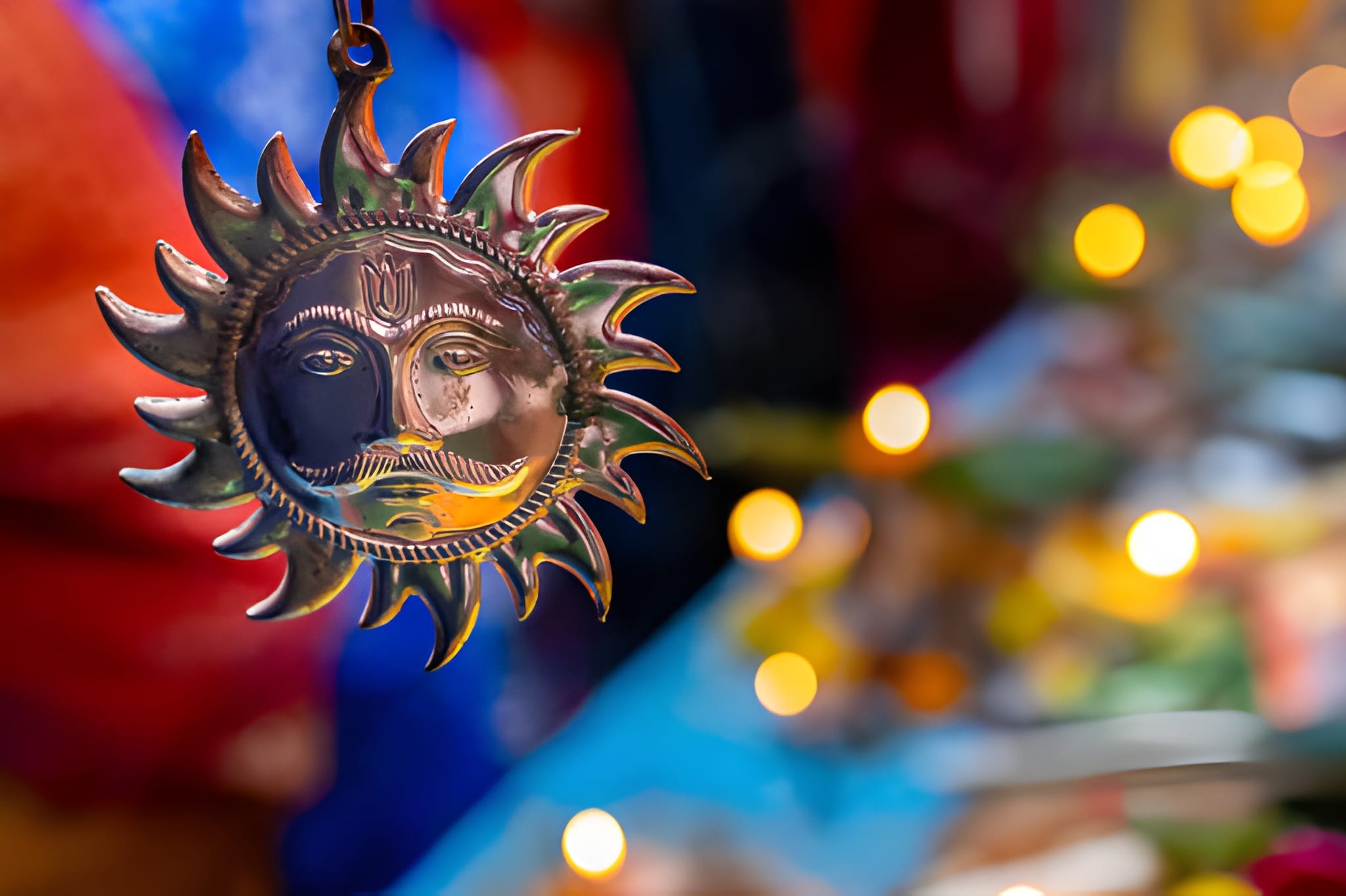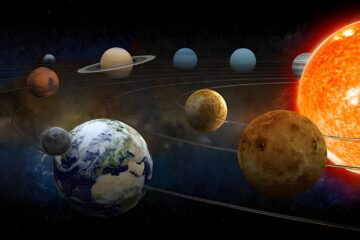In Vedic astrology, dasa systems represent the unfolding of life experiences through specific planetary periods. The most universally applicable among them is the Vimshottari Dasa, which operates for almost everyone, except in cases where the Moon — the indicator of mind and perception — is severely afflicted or the native’s mental faculties are underdeveloped. However, classical texts also describe several special or “conditional” dasa systems in Vedic astrology that apply only when certain criteria are fulfilled in a horoscope.
Sage Parashara, the father of Jyotish, explained that when more than one dasa system is applicable, the rarer one should be given primary importance. This means that although Vimshottari applies to nearly all charts, conditional dasas — being rarer — may sometimes offer more precise insights when their specific conditions are met. Still, Vimshottari remains universally relevant and should never be ignored.
For example, the Chaturseeti Sama Dasa becomes applicable only when the 10th lord occupies the 10th house — a configuration found in roughly 8.3% of charts. Since this is much rarer than the majority who qualify for Vimshottari, this conditional dasa takes precedence in such cases. Yet, both systems may still operate simultaneously, complementing each other in timing events.
The underlying logic of all planetary dasas remains the same: planetary periods (mahadashas, antardashas, and pratyantardashas) describe how karmic energies unfold over time. Transits act as triggers, influencing how these latent promises manifest.
Major Conditional Dasa Systems in Vedic Astrology
Below are some of the best-known conditional dasa systems in Vedic astrology. Each one “activates” only if the chart meets a specific structural requirement:
- Chaturseeti Sama Dasa — Applies when the 10th lord is in the 10th house (about 8.3% of charts). This is a career-focused dasa and is often used for professional timing, rise, or setbacks in public status.
- Dwi-Saptati Sama Dasa — Applies if the Lagna lord is in the 7th house or the 7th lord is in the Lagna (roughly 16.7%). This dasa emphasizes relationship karma, visibility, and worldly engagement.
- Shat-Trimsha Sama Dasa — Applies when birth occurs during the Sun’s hora in daytime or the Moon’s hora at night (around 11%). Traditionally linked to vitality, parental themes, and life force.
- Dwadasottari Dasa — Applies if the Lagna falls in a Venus Navamsa (approximately 16.7%). This emphasizes themes of relationships, refinement, and material comfort, especially in charts where Venus is strong.
- Sataabdika Dasa — Applies when the Lagna is Vargottama, meaning the same sign rises in both the birth chart (D1) and the Navamsa (D9) (about 11%). Often read for overall life stature, legacy, and long-term blessings or responsibilities.
- Panchottari Dasa — Applies if Cancer rises in both the D1 and the D12 (parents/ancestry) charts (less than 1%). This is extremely rare and is treated as deeply karmic for lineage matters.
- Shashti-Hayani Dasa — Applies if the Sun occupies the Lagna (around 8.3%). This dasa tends to highlight identity, ego development, authority, health, and father-related themes.
Notice the pattern: conditional dasa systems in Vedic astrology are activated by specific placements, such as a planet in a certain house, a vargottama ascendant, or hora-based birth conditions. They are not “always on.” They switch on when the rule is met.
When Multiple Conditional Dasas Apply
Sometimes, more than one conditional dasa can apply in the same chart. Suppose:
- The 10th lord sits in the 10th house (triggering Chaturseeti Sama Dasa), and
- The Sun is in the Lagna (triggering Shashti-Hayani Dasa).
In such a chart, both conditional dasa systems are technically valid. Which one should you prioritize for prediction?
This is where Parashara’s instruction becomes practical: give more weight to the rarer or stronger system. To decide this, compare the strength of the planets involved:
- Check shadbala (quantitative planetary strength).
- Check dignity (exalted, own sign, friend sign, enemy sign, debilitated).
- Check house ownership (is the planet a functional benefic or functional malefic?).
- Check aspects and conjunctions (is it protected or afflicted?).
If the Sun is much stronger than the 10th lord in that chart, Shashti-Hayani Dasa may “speak louder.” If the 10th lord is extremely powerful, Chaturseeti Sama Dasa may dominate career timing. In practice, both dasas still matter — but one becomes the lead narrative, the other becomes supporting commentary.
How Conditional Dasas Interact with Vimshottari
Even when a conditional dasa becomes active, Vimshottari Dasa does not shut off. Think of them as two clocks:
- Vimshottari Dasa — your baseline karmic timeline, based on the Moon’s nakshatra at birth. It shows the broad emotional and experiential flow of life.
- Conditional Dasa — a specialized timing lens that zooms in on one karmic thread (career, marriage, authority, lineage, etc.) under strict conditions.
This is powerful for prediction. When Vimshottari and a conditional dasa agree on an upcoming theme — marriage, job shift, inheritance, relocation, illness, breakthrough — the event becomes far more likely. When they disagree, you’ll see mixed or partial manifestation (starts but stalls, or opportunity without stability).
Because of this, advanced astrologers often use conditional dasa systems in Vedic astrology to confirm the timing seen in Vimshottari, rather than to replace it. Cross-verification is the key skill.
Why Rahu and Ketu Are Often Missing
One striking feature of many conditional dasa systems is that they leave out Rahu and Ketu. This is not an accident. Rahu and Ketu are shadow nodes, not physical planets, and are considered carriers of subconscious and karmic residue. Conditional dasas often focus on physical, structural conditions in the chart — like ascendant placement, vargottama status, hora at birth, or angular lordship. These are concrete, external indicators, so the nodes are sometimes excluded.
In contrast, Vimshottari Dasa is lunar and psychological. It is anchored in the Moon’s nakshatra at birth and naturally includes Rahu and Ketu. In other words, Rahu and Ketu become central in systems that prioritize inner karmic evolution (like Vimshottari), but they can fade from systems that prioritize external structural rules (like many conditional dasas).
Practical Use in Modern Astrology
In real practice, most astrologers do not calculate these dasas by hand anymore. Software such as Jagannatha Hora (JHora) can generate Vimshottari Dasa and any applicable conditional dasas in seconds. That lets you spend time on interpretation instead of arithmetic.
But this convenience can also mislead beginners. Just because software shows a dasa doesn’t mean you should treat it as equal to Vimshottari in every reading. You must:
- Confirm that the chart truly meets the condition for that dasa.
- Understand which area of life that dasa is actually timing.
- Compare the strength of the ruling planet(s) using dignity, shadbala, house ownership, and aspects.
- Cross-check with current Vimshottari Dasa and key transits.
Students should first become comfortable reading Vimshottari across real charts — correlating life events with MD/AD (mahadasha / antardasha) sequences — before adding conditional dasa systems in Vedic astrology. These special dasas require nuance. They are powerful, but only in charts that truly qualify.
Important Notes
When more than one conditional dasa applies, which should take priority?
When more than one conditional dasa is applicable, prioritize the rarer or more powerful one. Classical teaching says to compare the strength of the involved planets using shadbala, dignity, and house rulership. The stronger planetary current usually dominates the period. Still, all qualifying dasas may operate in parallel to some degree.
How should a Sataabdika Dasa be interpreted for a Vargottama Lagna?
Sataabdika Dasa (linked to a Vargottama Lagna) should never be read alone. It must be interpreted alongside Vimshottari. This dasa can speak to long-term stability, legacy, and status, but its meaning is advanced. It’s best used as confirmation once you already understand the core promises of the chart.
Why is Vimshottari Dasa still considered reliable despite so many other systems?
Vimshottari Dasa is anchored in the Moon’s nakshatra at birth, which represents mental experience and karmic perception. As long as the Moon is intact (not severely compromised), Vimshottari applies to almost everyone and reliably tracks major life chapters. Other systems add nuance; Vimshottari provides continuity.
Should conditional dasas be applied to divisional charts like D9 or D10?
No. Conditional dasas are judged primarily from the main birth chart (D1). Divisional charts like Navamsa (D9) or Dasamsa (D10) refine meaning in specific areas (marriage, career, etc.), but the activation and sequencing of the dasa itself comes from D1. You correlate the conditional dasa’s promise to the relevant divisional chart after, not instead of, D1.
Does Chaturseeti Sama Dasa apply if the 10th lord is in the 10th rashi but shifts houses in Bhava Chalit?
Yes. Applicability is determined primarily from the Rashi (sign-based) chart, not from Bhava Chalit adjustments. So if the 10th lord is in the 10th sign in D1, Chaturseeti Sama Dasa is considered active, even if house cusps in Chalit nudge it slightly.
Is it correct to start Vimshottari Dasa from the Lagna Nakshatra instead of the Moon’s Nakshatra?
No. By definition, Vimshottari is calculated from the Moon’s nakshatra. Starting from the Lagna nakshatra is essentially inventing a different system. Research and experimentation are fine, but if you change the reference, it’s no longer classical Vimshottari.
FAQ
Why do many astrologers still prefer Vimshottari over conditional dasas?
Because Vimshottari Dasa is universal, Moon-based, and time-tested. Conditional dasa systems in Vedic astrology are powerful but niche. They are excellent for confirmation and fine-tuning, but Vimshottari remains the backbone of timing analysis for most charts.
How can conditional dasas be used effectively in modern practice?
Use them as a second layer. If Vimshottari shows a career shift but timing feels “off,” check if a conditional career-oriented dasa (like Chaturseeti Sama Dasa) is active. When both point to change in the same window, confidence in that prediction increases dramatically.
What is the value of Jaimini’s Chara Dasa compared to conditional dasas?
Jaimini’s Chara Dasa runs on signs and karakas rather than strictly on planets. It’s powerful even with slightly uncertain birth times. Conditional dasas depend on very specific structural rules (for example, Lagna lord in the 7th). Chara Dasa is broader-pattern and excellent for long-range themes; conditional dasas are surgical and event-linked. They can be used together if you’re fluent in both systems.
Why do Rahu and Ketu not appear in most conditional dasas?
Because many conditional dasas emphasize concrete, structural factors like ascendant placement, hora, vargottama status, or angular lordship. Rahu and Ketu are shadowy, psychological, karmic nodes; they dominate more lunar, perception-based systems like Vimshottari instead. Their absence doesn’t mean karma is absent — it means the focus is different.
Can beginners experiment with conditional dasas?
You can study them, but don’t lean on them until you’re confident with Vimshottari. First learn to map life events to Mahadasha / Antardasha changes in Vimshottari, add transits of slow planets (Saturn, Jupiter, Rahu/Ketu), and observe patterns. Once you’re fluent there, conditional dasa systems in Vedic astrology become a high-precision tool instead of a source of confusion.
“`
Want clarity on your own chart? At Much Needed Astro we read real horoscopes with classical Jyotish methods — no generic sun-sign fluff. If you’d like a focused reading or guidance on a specific life question, you can book a session with us.
This series is part of Much Needed Astro’s Vedic Astrology Foundations.



